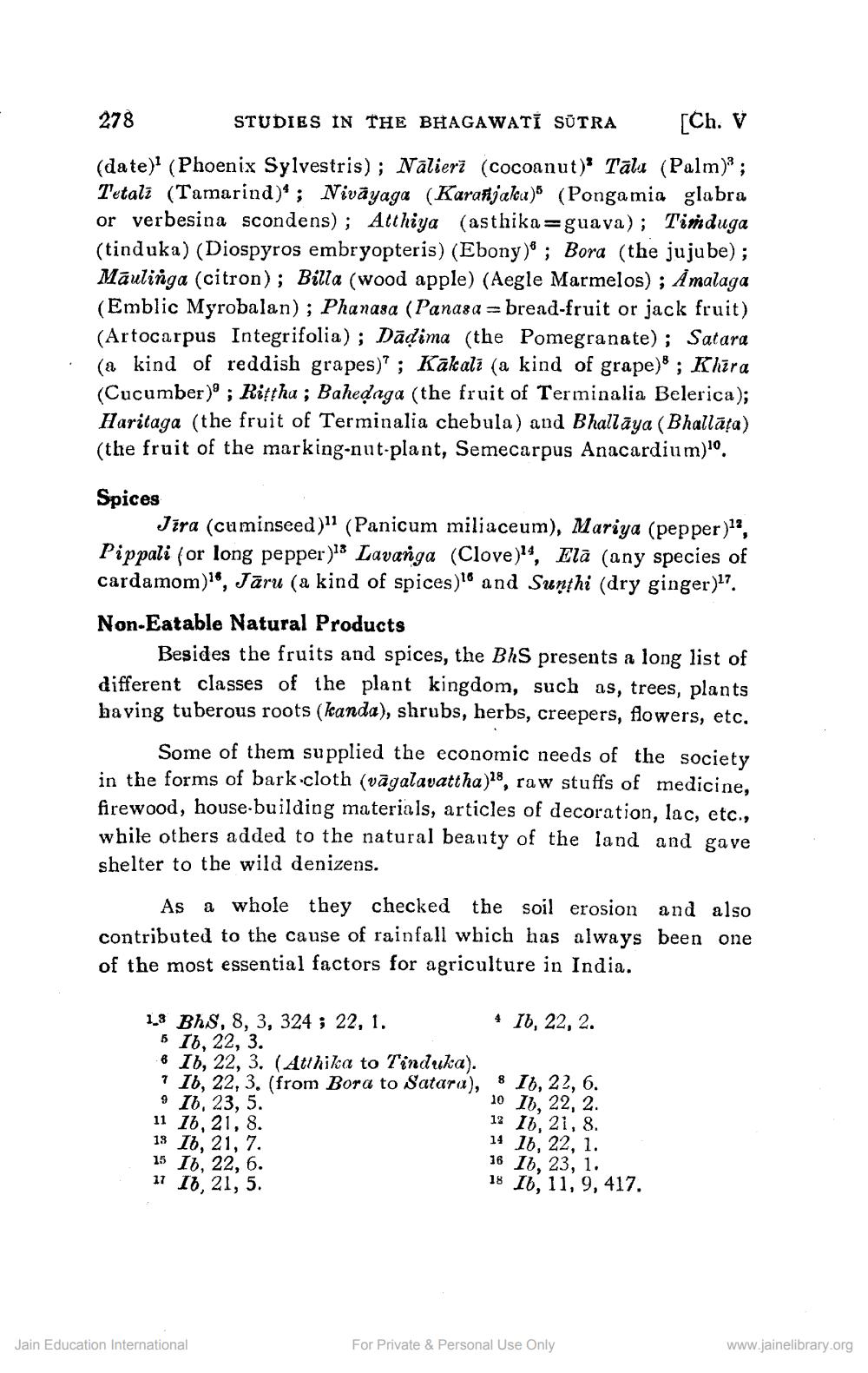________________
278
STUDIES IN THE BHAGAWATI SUTRA
[Ch. V (date)1 (Phoenix Sylvestris); Nalieri (cocoanut) Tala (Palm); Tetali (Tamarind); Nivayaga (Karanjaka)5 (Pongamia glabra or verbesina scondens); Atthiya (asthika guava); Timduga (tinduka) (Diospyros embryopteris) (Ebony); Bora (the jujube); Maulinga (citron); Billa (wood apple) (Aegle Marmelos); Amalaga (Emblic Myrobalan); Phanasa (Panasa bread-fruit or jack fruit) (Artocarpus Integrifolia); Daḍima (the Pomegranate); Satara (a kind of reddish grapes); Kakali (a kind of grape); Khira (Cucumber); Riṭṭha; Baheḍaga (the fruit of Terminalia Belerica); Haritaga (the fruit of Terminalia chebula) and Bhallaya (Bhallata) (the fruit of the marking-nut-plant, Semecarpus Anacardium)1o.
Spices
Jira (cuminseed)" (Panicum miliaceum), Mariya (pepper)12, Pippali (or long pepper)13 Lavanga (Clove), Ela (any species of cardamom), Jaru (a kind of spices) and Sunthi (dry ginger)17. Non-Eatable Natural Products
Besides the fruits and spices, the BhS presents a long list of different classes of the plant kingdom, such as, trees, plants having tuberous roots (kanda), shrubs, herbs, creepers, flowers, etc.
Some of them supplied the economic needs of the society in the forms of bark cloth (vagalavattha)18, raw stuffs of medicine, firewood, house-building materials, articles of decoration, lac, etc., while others added to the natural beauty of the land and gave shelter to the wild denizens.
As a whole they checked the soil erosion and also contributed to the cause of rainfall which has always been one of the most essential factors for agriculture in India.
13 BhS, 8, 3, 324; 22, 1. 5 Ib, 22, 3.
6 Ib, 22, 3. (Atthika to Tinduka). Ib, 22, 3. (from Bora to Satara),
9 Ib, 23, 5.
11 1b, 21, 8.
13 Ib, 21, 7. 15 Ib, 22, 6. 11 Ib, 21, 5.
Jain Education International
4 Ib, 22, 2.
8 Ib, 22, 6.
10 Ib, 22, 2.
12 Ib, 21, 8.
14 1b, 22, 1.
16 Ib, 23, 1. 18 Ib, 11, 9, 417.
For Private & Personal Use Only
www.jainelibrary.org




